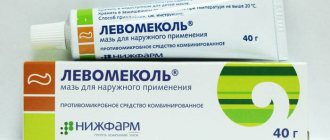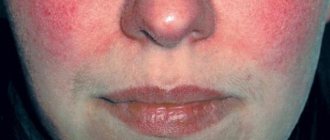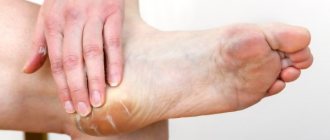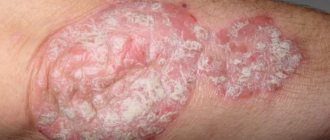What is pearly papules and what do they look like?
The pearl-colored papules were carefully studied, which made it possible to establish their nature. These formations at the histological level are angiofibromas - benign formations of connective tissue. In each vesicle, dermatoscopy reveals a central vessel shaped like a comma.
Papules on the head in men are located along the corolla in the form of a ring. They look like hemispherical outgrowths. Evenly spaced in several rows, they resemble a crown. The diameter of each pearly papule is 1-2 mm. They may have a thread-like shape if the longitudinal size is large.
Another name for the disease is pearly nodules. The first mentions of them date back to the beginning of the 18th century. Since then, it is reliably known that papules are completely safe and are caused by the anatomy of the male genital organs.
Pearly papules on the head: photo, localization, removal
Pearly papules on the glans penis occur in 10-48% of men aged 15-35 years. They are normal and should not cause concern. This is not a disease. This type of papulosis is not contagious and does not require treatment. However, you need to make sure that these are pearlescent papules and not pathology.
Papules on the head photo
Since hirsutoid papillomas are not a disease, they do not need to be treated. But differential diagnosis with papillomavirus infection is necessary. With HPV, similar growths form, and sometimes only a doctor can distinguish them.
Condylomas can be located not only in the lower part of the head. They grow singly or in groups. They have different sizes and shapes. Feels softer than pearly papules. They are flesh or pink in color.
Such growths can grow and branch. To identify the virus, it is necessary to take a blood test, a smear and a scraping. The doctor may also perform a dermatoscopy.
It allows you to carefully examine the elements under multiple magnification.
Removal methods
There is no need to remove the papillary crown, because it is not hazardous to health and does not cause physical discomfort. But many men consider this a defect and want to get rid of it. Some young people even try to do this on their own, which is strictly prohibited.
Self-medication can result in many complications. When plucking with tweezers, tissues are injured. Infection easily penetrates into wounds. Treatment with remedies for papillomas and warts leads to inflammation and swelling. As a result, the head loses sensitivity. Dermatological reactions sometimes occur.
If a man is determined to get rid of white papules on the head, he should resort to one of the following methods used in medical institutions.
Laser coagulation
The most effective and painless method. The tissue of the growths is broken down at the molecular level. Neighboring cells are not damaged. Recovery occurs quickly, no scars remain.
Radio knife
Point exposure to radio waves. As a result of irradiation, free radicals are released that destroy the cells of the papules. Shallow scars may form.
Electrocoagulation
A high-frequency current dries out the growths, after which their remains are removed surgically. Scars often remain after manipulation. The procedure requires anesthesia and subsequent painkillers.
Cryodestruction
Burning with liquid nitrogen. After the procedure, the treated skin turns white, then a painful blister forms in this place. Over time, it is replaced by a crust. Complete healing occurs within 1.5-2 weeks, but a pigment spot may remain. The procedure is dangerous because it affects adjacent tissues and deep layers of skin.
Regardless of the method chosen, you need to be prepared for the fact that hirsutoid papillomas will reappear over time. This is a physiological feature that cannot be eliminated. True, in some cases, circumcision of the foreskin helps solve the problem forever.
Pearly papules on the head are completely harmless. Doctors are inclined to believe that there is no need to remove them even for cosmetic purposes. A mother-of-pearl necklace should not be considered a disadvantage. Small growths are almost invisible, but large ones can be useful. Many women note increased sensations during sex with a partner with this feature due to additional stimulation.
Source: https://andrologiya.com/perlamutrovye-papuly-na-golovke.html
Causes of pearly formations in men and whether they are contagious
A theory has been proposed that papules on the penis in the form of mother-of-pearl pearls are a deviation from the norm. This feature is inherent at the genetic level. This is confirmed by the high frequency of occurrence in the population - up to 48% of all men.
The formation of pearly papules is influenced by the following factors:
- circumcision - the frequency of detection of nodules in persons who have undergone surgery is much lower,
- disruption of the sebaceous glands,
- changes in hormonal levels in adolescents and increased cell proliferation against this background provoke pearlescent formations,
- lack of personal hygiene and the associated aggressive effect of smegma on the mucous membrane of the penis.
Years of observation have made it possible to establish that mother-of-pearl pearls are not caused by an infectious factor; in epidemiological terms, complete safety is guaranteed. They pose no danger to the owner and do not affect the genital area or urinary system.
There is a misconception that papules in the area of the head of the penis are caused by the human papillomavirus. This theory is incorrect; the histological structure of pearls does not correspond to papillomas with HPV. Pearlescent nodules are often confused with genital warts. Such overdiagnosis is justified. HPV is widespread, and some types of the virus pose a cancer risk. Inexperienced doctors can easily confuse visible pearlescent small papules with condylomas and prescribe irrational treatment.
The presence of HPV may be indicated by:
- the appearance of a papular rash on the foreskin and head of the penis at the same time,
- color change from pearlescent to purple,
- the appearance of a burning sensation, pain and erosion.
There are methods of screening studies that can reduce the likelihood of error to zero.
Etiology
The exact reasons why pearlescent papules form in men remain unknown today. However, experts in the field of urology believe that predisposing factors may include:
- proliferation of penile tissue, which is the result of cell proliferation;
- dysfunction of the sebaceous glands;
- blockage or swelling of the pores of the organ being described;
- increased testosterone levels;
- period of puberty in adolescents.
It is worth noting that the appearance of such formations is not associated with insufficient personal hygiene or promiscuous sexual intercourse. It is extremely rare that such growths are found in males who have undergone the “circumcision” procedure.
From 10 to 40% of males are diagnosed with pearlescent penile papules. However, adult men most often suffer from this disorder. In persons aged 15 to 20 years, the incidence rate averages 20%, and from 20 to 30 years, only 10%.
Do women have education?
In women, such formations have a different histological structure. In representatives of the fairer sex, pearl-colored papules are formed as a result of disruption of the apocrine sweat glands. These formations appear in the area of the labia, groin, nipple halo, pubis, armpits, and red border of the lips. White papules have a pearlescent tint and a hemispherical shape. The reason for their appearance is hormonal changes in the female body during adolescence and genetic predisposition. Some studies indicate a connection with the functional state of the thyroid gland and ovaries.
Pearlescent nodules do not cause discomfort. There is a decrease in their number during menopause. This means that the nature of the formations is hormonal.
With the advent of menopause, a decrease in the production of sex hormones occurs, which reduces the secretion of apocrine glands and the number of pearly small papules.
Treatment of the rash
What should men do with pearly papules on the penis - harmless anatomical changes? No action needs to be taken. By the age of 40 they will disappear on their own. The situation is similar in women
. The rash may remain for many years and disappear spontaneously.
But in both cases, you can always seek help from a medical institution to remove pearlescent papules . Urologists, gynecologists, dermatologists or cosmetologists will tell you how to get rid of them
. They will offer various methods to solve the problem:
- laser removal:
- electrocoagulation;
- darsonval;
- cryotherapy;
- radio wave therapy.
After laser intervention, there must be a rehabilitation period, accompanied by the appearance of bruises, swelling, and crust formation. Full recovery will occur in 2 weeks
.
When choosing other methods, patients return to their normal lifestyle immediately after the procedure. They may additionally be prescribed as a deterrent to prevent the spread of pimples.
When to worry
If the condition remains unchanged, the papules do not require any treatment. But pimples can be confused with molluscum contagiosum or anogenital wart (condyloma acuminata)
.
Warts are soft, different in size, and are located on a thin stalk
. The mollusks have a hemispherical shape with a depression in the center. When pressed, curdled contents are released.
Neoplasms can be signs of other diseases and disorders in the human body. It is worth seeking advice if the rash causes discomfort:
- burning, itching;
- the appearance of swelling and redness in the area where the pimples are located;
- painful sensations when urinating;
- temperature;
- increase in the volume of growths;
- the rash turns into sores and bleeds;
- papules are filled with fluid.
To clarify the diagnosis, the doctor will examine and palpate the problem area. Will ask additional questions
.
If necessary, he will conduct a dermatoscopy —examination of the papules using a special device. Refer the patient for a biochemical, general clinical, blood test to exclude STDs
.
Conduct a PCR test and biopsy of nodules for histological examination. Based on the information received, he will make a diagnosis and prescribe treatment. Danila2018 Posts: 25 Registered: Jul 10, 2020, 10:18 pm
When is treatment necessary and what it can be?
Pearlescent small nodules do not pose a threat to human health. Treatment can be carried out at the request of the patient when he is not satisfied with the presence of formations. In women, pearl-colored papules are removed due to a cosmetic defect. In other cases, no treatment is carried out. Elimination methods are similar to those for genital papillomas. Ointments and homeopathy are ineffective in this case.
Operational
Minimally invasive methods used to remove pearlescent nodules:
- laser destruction,
- cryodestruction for papules,
- electrocoagulation.
The laser allows you to effectively get rid of pearlescent growths. The procedure is painless due to the use of local anesthesia. After pre-treatment with antiseptics, an anesthetic is injected into the area of the upcoming operation. A laser is aimed at the formations and burned out due to a sharp increase in temperature in the tissues.
The procedure is bloodless due to the cauterizing effect on the blood vessels. Non-contact removal eliminates the possibility of infection during the procedure.
After removing the papules, a crust forms, which disappears over time. The procedure is carried out quickly. During the recovery period, which takes about 2 weeks, careful care of the wound after pearlescent formation is necessary. Otherwise, complications may arise.
Need advice from an experienced doctor? Get a doctor's consultation online. Ask your question right now.
Ask a free question
Cryodestruction is a cheap and accessible method. The low temperature created in the papule leads to a narrowing of the vessels that supply nutrition to the formation. This leads to oxygen starvation and cell death. Unlike the laser method, papules do not disappear immediately, but after some time. The rejection of dead nacreous tissue occurs gradually. After several cycles of freezing and thawing, swelling and hyperemia appear. Then a vesicle with serous contents is formed. After this, it passes and a crust forms. It disappears within 1-2 weeks.
The refrigerant is supplied using conductors of different shapes, which ensures local freezing of the pearl-colored area.
Among the disadvantages of the cryodestruction procedure for removing papules is probably incomplete removal or excessive freezing, which subsequently leads to scarring.
Electrocoagulation is the burning of formations using an instrument that is heated to a high temperature using an electric current. The mechanism of action and procedure are similar to laser removal. Cutting off pearly small papules is done using a loop. At the same time, the vessels are cauterized, which prevents bleeding. It is as effective as a laser.
Traditional methods
Before you begin self-medication at home, you need to understand that most traditional methods have not been scientifically tested and have no evidence of their safety and effectiveness. It is recommended to consult with your doctor: dermatovenerologists deal with this problem. The doctor will be able to warn against dangerous treatments.
The most popular methods of treating pearly papules:
- Aloe. It is necessary to cut a leaf of the plant and divide it in half. Then put it in the refrigerator for three days. It is advisable to use plants older than three years of age. Three days later, the leaves are crushed into porridge and poured with cold water in a ratio of 1:5. Let it brew for 1 hour, put it on the stove and bring to a boil. Papules are treated with a cooled solution.
- Mumiyo. One gram of the ingredient is mixed with 50 ml of honey. Place in a water bath, melt and allow to cool. Then add 1 tsp. aloe juice and mix thoroughly. The resulting mixture is applied to pearlescent large and small papules for 10 minutes, then removed and treated with sea buckthorn oil. The course consists of 15 days. Carry out the procedure twice daily.
- Calendula. Dried flowers are poured with boiling water. For 1 tbsp. vegetable raw materials use 500 ml of water. Let it brew for 1-2 hours. The infusion is applied to the affected areas several times a day.
Do not remove papules with iodine, celandine or other aggressive means.
Pearly papules treatment in men
Pearly papules are small bumps that can form on the ridge of the glans penis. They are a simple anatomical change. At the same time, I should note that penile papules are a natural part of the anatomy of your penis.
You can live with them as they will not bother you and are not associated with any health hazard.
Before diving deeper into the problem, let me reassure you that the appearance of Pearly Papules is completely normal for most men, and a small number of them is a completely normal physical condition.
Also, the disease itself cannot lead to any dangerous consequences, either for sexual life or for a man’s health in general.
Keep reading to learn about the causes, symptoms, diagnosis and proper treatment of pearly papules in men!
Pearly papules in men
Pearly papules appear to be small pimples on the ridge of the head of the penis. They appear in several rows in a small group measuring less than 1 - 3 mm, forming one or two rows on or around the head of the penis.
They may vary in color and may appear pink, yellow, white, or sometimes clear in appearance, and are shaped like small pearls.
Pearly papules are also known as Hirsutoid Papillomas or Hirsutism Crowns Glandis People often make the mistake of confusing them with Genital Warts and also thinking that the papules are sexually transmitted.
Since the penis is perhaps the most important organ for every man, any problem associated with it can have a negative impact on a man's psychological health.
People, don't be afraid! Since it is not a disease, whether or not to remove it is your personal preference, and may be considered a cosmetic step rather than a treatment.
Another major problem that might scare you is surgery to remove Pearly Papules, but you should not opt for surgery for a minor problem like papules.
There are much simpler methods to solve this problem, which we will discuss later in this article.
How common is the problem of penile papules in men?
Poll: When did your acne appear? (Qty: 4295)
I've been suffering all my life
It's been a couple of years now
About a few months
Recently
To answer, click on the desired answer option. results
You are not alone! This is a fairly common problem, especially among young men in their twenties and thirties. Papules appear or have appeared at various times in 30 to 48% of all men. It also occurs mainly among a large category of uncircumcised men.
After extensive medical analysis, leading US clinics concluded that papules were found in 33.3% of uncircumcised men and 7.1% of circumcised men.
Before choosing any treatment option for Pearly Papules, you must first diagnose the conditions and causes of the papules as accurately as possible.
The best way to do this is to consult a doctor about your problem and undergo the entire course of treatment under his strict guidance.
Ordinary people often mistake pearly papules for Genital Herpes, which is a significant mistake when treating them independently.
It is quite difficult to identify and distinguish between these two diseases on your own. Therefore, before starting treatment, first make sure that your diagnosis is correct so that you do not apply the correct treatment if the diagnosis is incorrect.
Although the wrong effects of treatment can be easily corrected, it is still for your own good to carry out treatment, no matter how promising, only with the approval of a doctor.
Pearly papules photos in men
Treating pearly papules at home
Natural remedies are always the best to get rid of penile papules. Home treatment options are much better than surgical intervention, which is relatively more dangerous, more expensive, and which requires constant monitoring by doctors.
Use Castor Oil
To begin the procedure, make sure that the penis is dry and clean. Apply a little castor oil using cotton swabs to the affected areas 3 - 4 times a day. Continue treatment until all papules are completely removed.
This method is very safe and guarantees complete removal of pearly papules in men. It is also important to find a reliable manufacturer, and not a fake, before buying a bottle of castor oil.
Use Triple Antibiotic Ointment
Ointment is needed for a safe way to get rid of bumps and papules on the penis. This ointment, as the practice of its use proves, is quite effective.
Apply it to the affected areas at least twice a day, leaving twelve hours between applications.
Ointments for genitals
Traditional medicine also offers us many recipes for ointments and masks that combat genital problems in men.
In the case of papules, the most common is a homemade ointment made from honey, aloe juice, sea buckthorn oil and crushed mummy tablets in powder form mixed together.
Proportions: 50 grams of honey, 2 teaspoons of aloe, and a spoonful of sea buckthorn, and also 3 mummy tablets.
The contents are heated over a fire, and then cooled to room temperature and applied to the areas where pearlescent papules are formed for 10 - 15 minutes.
Surgical methods for removing pearly papules in men
The presence of pearlescent papules is no secret, which causes anxiety and perhaps even stress and sexual dissatisfaction in most men. And often a man decides to remove the papules surgically for a faster and better treatment effect.
To begin with, of course, it is important to make certain diagnostics and take tests to establish a diagnosis by a dermatologist and the subsequent course and method of treatment. Although an experienced doctor, in order to identify pearlescent papules, only a visual examination of the patient and the head of the penis is sufficient.
In more rare cases, the patient will first be required to undergo a biopsy.
It is also worth noting that with any surgical method of removing pearlescent papules, a man does not have to be in a hospital; one can only get by with regular examinations and consultations with the attending dermatologist or urologist.
Pearlescent papules in men photo
The main methods for removing pearlescent papules that can be offered to you:
- cryotherapy.
- electrocoagulation;
- laser therapy;
- Typically, the choice of treatment method will depend on the direct recommendations of the doctor and the financial capabilities of the patient. If the latter is found to have additional diseases accompanying pearlescent papules, and these could be diseases of the diuretic system, kidneys or testicles, treatment, as a rule, begins with a more serious one problems, but end up with a milder one, such as papules.
With electrocoagulation, anesthesia is used, which removes the painful effect, and with the help of a device with a special loop at the end, the papules are captured and subsequently removed. The loop is preheated to a certain temperature and with the help of a current, the papules are cauterized, in place of which only a crust remains, which passes into over the next week.
When choosing a laser method, anesthesia is not used. The process is not very painful, and the laser itself removes papules on the head of the penis. The procedure is considered one of the most effective and safe in the treatment of such forms of diseases.
When choosing Cryotherapy, removal is performed with liquid nitrogen at a low temperature. It is worth noting that nitrogen is a safe chemical for humans.
It doesn’t matter which treatment method you choose, but in order to prevent complications, first of all, you need to adhere to careful personal hygiene - wash the penis only with wet wipes and do not wet the wounds with water. Do not rip off the scab from cauterization, which should fall off on its own within 1 - 1.5 weeks after the procedure.
I will tell you honestly and frankly that not a single doctor and not a single procedure can give you a 100% guarantee that pearlescent papules will not appear again, and you will again have to choose between surgical intervention, preventive treatment, or not resorting to do not use any of the methods and do not pay attention to the papules.
Source: https://doloipryshi.ru/index.php/udalenie-perlamutrovyih-papul-u-muzhchin-lechenie/
Possible consequences of pearly papules
Pearly or pearly papules do not pose a threat to men or women. They are considered benign formations that do not need to be treated. The formations cause discomfort from a cosmetic point of view; at the patient’s request, the nodules on the penis are removed.
Pearlescent papules can be confused with genital warts and other manifestations of the human papillomavirus, which leads to irrational treatment. The greatest danger is posed by self-therapy when patients try to remove them at home. This is fraught with the formation of erosions and scars due to the use of drugs aggressive to the mucous membranes and skin.
Why do men want to get rid of pearly papules so badly?
Any cosmetic defect on the human body can cause the development of psychological abnormalities - isolation, shyness and unsociability. The situation is much more serious with cosmetic defects located on the genitals. This can greatly affect your sex life.
Even despite doctors’ statements that there is no need to remove pearlescent papules, more than 90% of men want to get rid of them once and for all. The worst thing is when they try to remove pearlescent papules on their own using cauterization with iodine or excision with nail scissors.
Under no circumstances should this be done, since each removed papule is an “open gate” for infections, and even complete sterility does not provide any guarantee that you will not harm your body. The only thing that really works effectively and does not leave open wounds is toothpaste for smokers.
But, its use is advisable only in cases where the rashes are not large in size and their number is no more than ten pieces. Small pink peas are spread with paste overnight for 7-10 days. If after this period you have not noticed a positive result, then it is better not to torture yourself and contact a surgeon for qualified removal.
What not to do
Experts categorically do not recommend removing pearl nodules on your own, since an independent approach to solving such a cosmetic problem can result in a serious infectious process on the genital organ.
Each specialist should explain to his patient as clearly as possible that pearlescent papules are not any pathological abnormality. That they do not arise as a result of sexually transmitted infections and poor care of the genitals in terms of intimate hygiene.
That papules of this nature do not pose any threat to a man, so there is no need to worry about them and try to get rid of them on your own. Some try to eliminate such an aesthetic defect with the help of drugs like Imiquimod or Podophyllin, which are used against genital warts.
This is unacceptable, since such medications against pearly nodules are absolutely powerless, and you will waste your time and money. Such nodules do not require any treatment, and after surgical removal they can reappear, so doctors tend to believe that it is better to simply not touch such formations.










